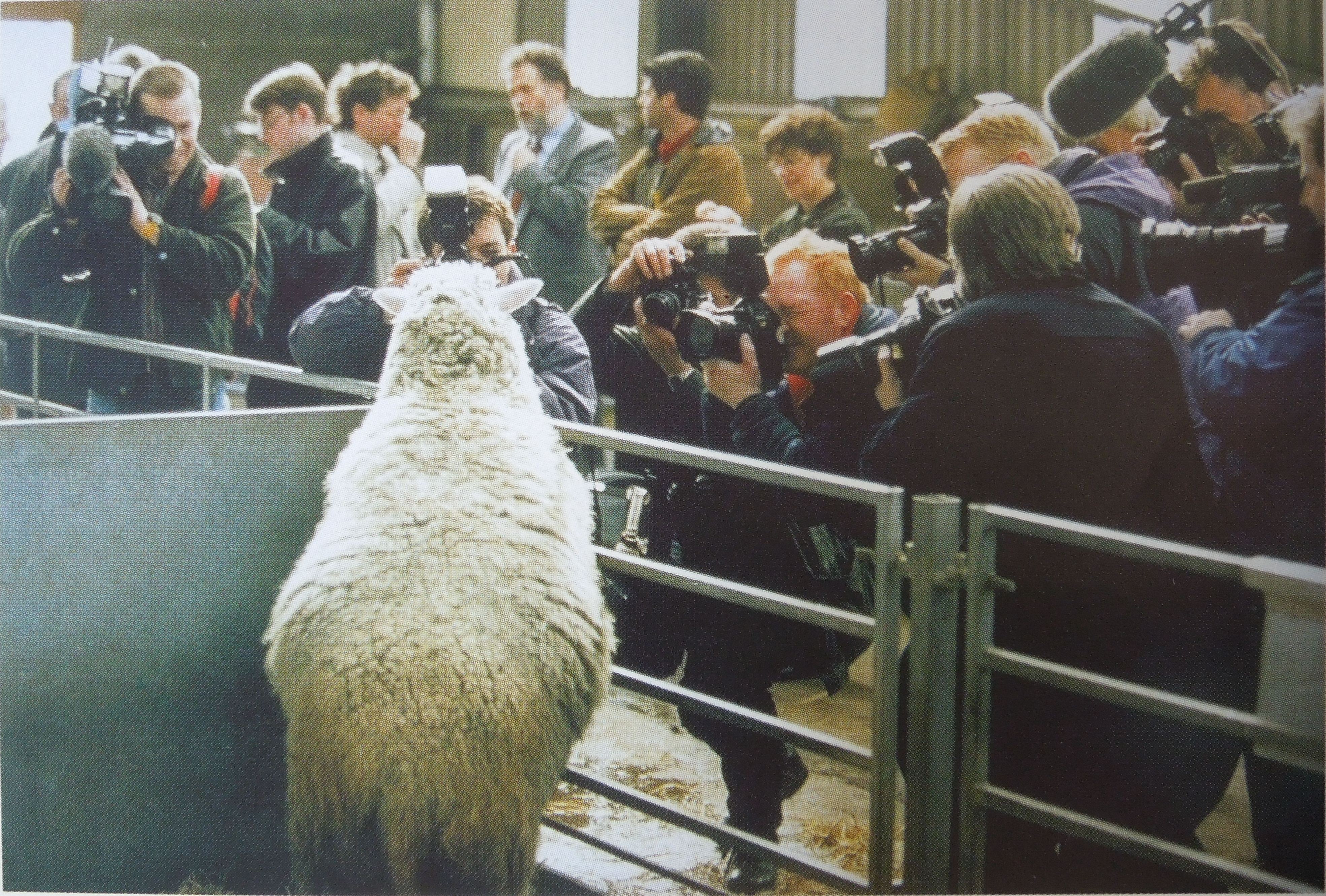 Here on the ‘Towards Dolly’ team we couldn’t let the 05 July go by without celebrating our namesake, who was born on this day in 1996. To most people, Dolly the sheep (1996-2003) needs no introduction. The first mammal to be cloned from adult cells, Dolly was produced at the Roslin Institute, Edinburgh as part of research into producing medicines in the milk of farm animals. The creation of Dolly met with public acclaim and outcry, fuelling the continuing debates surrounding the ethics of cloning. Most people know the basics about Dolly (including, of course, how she acquired her name), but here are a few facts that may surprise:
Here on the ‘Towards Dolly’ team we couldn’t let the 05 July go by without celebrating our namesake, who was born on this day in 1996. To most people, Dolly the sheep (1996-2003) needs no introduction. The first mammal to be cloned from adult cells, Dolly was produced at the Roslin Institute, Edinburgh as part of research into producing medicines in the milk of farm animals. The creation of Dolly met with public acclaim and outcry, fuelling the continuing debates surrounding the ethics of cloning. Most people know the basics about Dolly (including, of course, how she acquired her name), but here are a few facts that may surprise:
Dolly’s birth was kept under wraps for seven months
Dolly’s birth was announced to the world in Nature (385, 753-844) on 27 February 1997, when Dolly was already seven months old. (This time delay was so that the research could be properly prepared for presentation.) Although the journal featured ‘Dolly’ on the front cover, the ‘announcement’ was couched in somewhat muted terms: ‘Viable offspring derived from fetal and adult mammalian cells.’ It is only towards the close of the article that the phrase ‘The lamb born after nuclear transfer from a mammary gland cell is, to our knowledge, the first mammal to develop from a cell derived from an adult tissue’ suggests the importance of the event. Even so, few people at Roslin realised what the strength and duration of public interest in Dolly would be.
Clones pre-Dolly
Of course, there are naturally occurring clones in nature, such as in bacteria. In terms of laboratory cloning, transgenic frogs, mice and cows have been available from the 1980s onwards. The difference with Dolly was that it is so much more difficult to clone from an adult cell. Dolly was the only live lamb to emerge from 277 attempts.
Ever heard of Megan and Morag?
Megan and Morag were identical twin sheep cloned from the same embryo and were the first mammals to have been successfully cloned from differentiated cells. They were born at the Roslin Institute in July 1995. Although Megan and Morag never got the same level of publicity as Dolly was to have, there was a lot more resting on their birth. Crucially, Megan and Morag demonstrated that viable sheep can be produced by nuclear transfer from cells which have been cultured in vitro. The technical breakthrough which produced them made Dolly the sheep possible.
Polly and Molly the sheep
Since Dolly, other sheep have since been cloned from adult cells, as have cats, rabbits, horses, donkeys, pigs, goats and cattle. In 1997, two ewes were born at Roslin which were the first mammals to have been successfully cloned from an adult somatic cell (like Dolly) and to be transgenic at the same time. Scientists used cells into which a new gene had been inserted so that the animals produced a therapeutic protein in their blood. Polly and Molly built on the work that had been done with Dolly to demonstrate the therapeutic potentials of recombitant DNA technology combined with animal cloning.
Read more about Dolly and the work of the Roslin Institute here: http://www.roslin.ed.ac.uk/public-interest/dolly-the-sheep/
Over the next two years, I will be cataloguing the papers of Professor Sir Ian Wilmut (part of the team who cloned Dolly), Professor Grahame Bulfield (former Director of Roslin) and the Roslin Institute itself as part of the second phase of our Wellcome Trust-funded project. I look forward to discovering more about Dolly the sheep as well as the work of the Roslin Institute from its inception in 1993 until the early 21st century.
Photograph reproduced with kind permission of Murdo Macleod.

Pingback: The Giant’s Shoulders #61: to iCHSTM and beyond | Wellcome Library